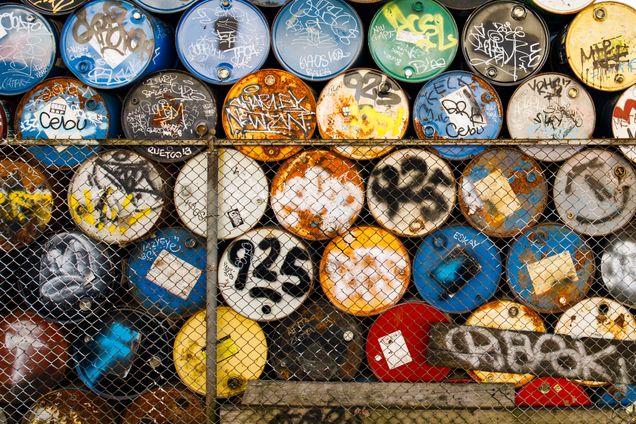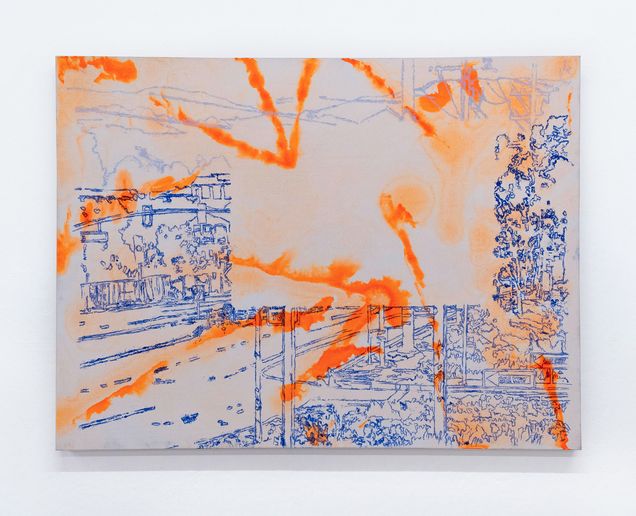Jijnasa (desire to know)
by Sayak Mitra
The crisscrossing threads of my identity as both a Bengali Indian and a conditional resident of the USA unfurl and entangle conventional forms of artistic knowledge. Through my paintings and installations, I assemble fragments of my life—past and present, seen and unseen—to describe the breadth of my multicultural experiences and the worlds in which I live.
I am interested in the Vedantic Nyãya-derived concept of DṚG DṚŚYA VIVEKA (the Seer and the Seen), which emphasizes philosophic inquiry and temporal unearthliness. Growing up in the suburbs of Calcutta and spending time in our rural desher bari (native country home) surrounded by mustard, potato, and jute fields, my earliest memories as a practicing artist involve building pandals (temporary ritual structures) and participating in household puja (sacred ceremonies of worship).
I live with a keen awareness of the origins and implications of materials. In my approach to the concept of dematerialization in art, I propose to expand the concept of auto-ethnographic embodiment by exploring the history of my materials, cultural interpretation, and subjective association, instead of rejecting the materiality of objects. To shape the visual reading of my material, I borrow tools from deconstructionism and semiotics that allow me to persuade dematerialization beyond its materiality and objecthood.
Figures 1-3. Sayak Mitra. Dhulagargh Industrial Park (2024). Acrylic, graphite, duct tape, food package, recyclable aluminum and steel cans, pegboard, wood, and tarp. Approximately 67 x 45 x 8 in. (170.2 x 114.3 x 20.3 cm). Images courtesy of the artist.
Examples of this approach are Dhulagargh Industrial Park (figs. 1-3) and Shakshi Chhilo Siddharth. Two primary materials, tarp and burlap, are used respectively for these two works. In Dhulagargh Industrial Park, mediums operate as mental images evoked by heterogeneous recyclable cans, upcycled fabrics, reclaimed materials, pigments, found objects, store-bought items such as home-improvement tools, urban development signs, etc. In West Bengal, the tarp has many purposes, including being used to dry parboiled rice and jackfruit seeds. I replaced seeds and rice with recycled cans, food packages, and makeshift signs. Parboiled rice is partially boiled and dried before milling and polishing, giving it a life before it is cooked for consumption. Similarly, after consuming green jackfruit, villagers collect, clean, and dry the jackfruit seeds for trade in the marketplace. Energy drinks, soda, beer cans, and frozen packed foods represent the working class in our society. The form of the cans echoes the stacks of kerosene barrels that are hauled around Calcutta on makeshift wagons (fig. 4).

In Dhulagargh Industrial Park, I play with the idea of the planogram and jnana yoga to design a coded metaphor for a global market. Jnana yoga is a disciplined practice of knowledge: it allows us to observe any phenomena beyond its literal significance. On the other hand, a planogram is a diagrammatic system that helps retail stores maximize their sales and feed the supply-demand requirements of capitalism. I used wood, pegboard on orange tarp, and a section of shelf to represent the myth of a grandiose global market (fig. 2). Merchandise tags from manufacturers that claim “fair-labor-standard-certified” reassure customers, while factory workers endure inhumane treatment to meet consumer demands. Products imported from overseas obscure the workers’ conditions, creating a system that shields customers from moral accountability and enables over-shopping. The shape of pegboards is an extractive, semi-fictional, cartographic representation of Dhulagarh Industrial Park in the Howrah district of West Bengal.
During the rise of the gig economy of the early 1970s, small-scale factories were established in newly built industrial complexes. During this time, employers were not responsible for providing basic labor support and exploitative companies were not held accountable. The irony of the post-colonial myth of India’s progress, juxtaposed with the extractive economy it inherited, has been glorified under the shadow of the “American Dream.” The phrase “American Dream” appears in parallel with the Indian protest slogan “Khabo Ki?” (“What can we eat?”) on a Trader Joe’s frozen Lamb Vindaloo package, reflecting the culinary culture of diasporic Indians (figs. 2-3). As it has become synonymous with remittances to Central and South Asia, the vindaloo dish evokes the bittersweet colonial legacy of Portuguese rule.
Figures 5-7. Sayak Mitra. Shakshi Chhilo Siddharth (2023). Graphite, acrylic, egg tempera, cardboard, aluminum signs, recyclable food packages, found woods, used gloves, burlap roll, stretched canvas, and reclaimed materials. Approximately 65 x 96 x 8 in. (165.1 x 243.8 x 20.3 cm). Images courtesy of the artist.
Shakshi Chhilo Siddharth showcases the socio-economic tension and societal hierarchy that operate as an aesthetic dialogue between several parameters: i.e. the customer of the local grocery, ambitious émigrés and refugees, collapse and vitality, disorder and systemization (figs. 5-7). This work was made in response to the architecture of the third floor of 808 Commonwealth Ave., a car factory turned into private art school studios in Boston. The main structure is made from a found divider wall and transformed into four wooden shelves leaning on the wall as we often see in diasporic grocery stores. The items on the shelf are carefully selected store-bought goods, drawings, and paintings. I propose a conversation between the plasticity of our “globalized idea,” and the stipulation of accessibility for many civilians who were not born in the affluent West or who have not benefited from the colonial extractive economy: between “JUST DO IT” and “DO NOT ENTER” (fig. 6). Half of the shelf is covered by burlap: in West Bengal, burlap is often repurposed into doormats, cushions, and curtains, giving discarded potato sacks a new life. This practice of deliberate repurposing reinforces cultural identity and underscores the metabolism of materials.
My practice ultimately aims to demonstrate how multiculturalism is an illusory neo-liberal concept that represents sovereignty rather than collective liberation. I’m interested in thinking about how the contemporary industrial complex bears and bares histories of colonial factories, and how my practice links ideas of empirical evidence with the myth of globalization. I see the world as a fragmented ensemble, and that fragmentation is excruciating. I seek to establish continuity through my research, paintings, and installations (figs. 8-14).
Figures 8-14. Sayak Mitra. Mindful Objective Investigation of Rationalist Narrative in the Gig Economy (2024); A Window At Industrial Park (2024); Ganashatru (2023); Untitled (2023); Untitled (2023); The flow of the Ganges (left panel of the triptych) (2023); International Mother Language Day (2022). Multimedia. Variable dimensions. Images courtesy of the artist.
____________________
Sayak Mitra (b. 1984, West Bengal) is an Indian artist working across traditional and contemporary new media art. His work addresses power, displacement, social injustice, and class issues through paintings, photographs, and installations. He graduated with a B.Tech from WBUT (2008) and an MFA in Painting from Boston University (2024). Sayak co-founded Artist-collective Ocular in 2006 and has exhibited globally, winning awards like the Hugh and Marjorie Petersen Award for Public Art and the Atul Bose Award for Painting.
____________________












